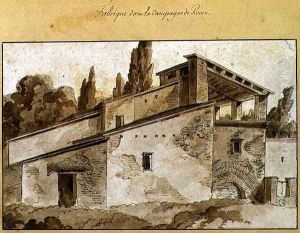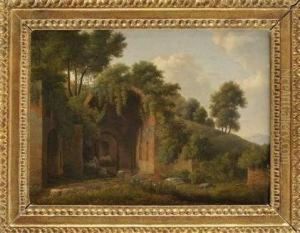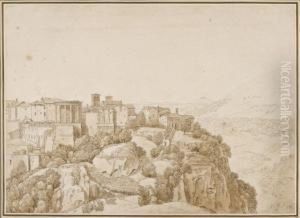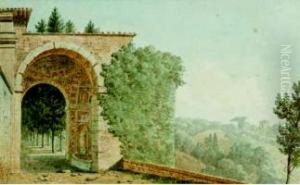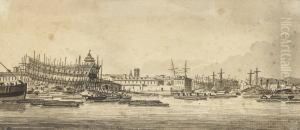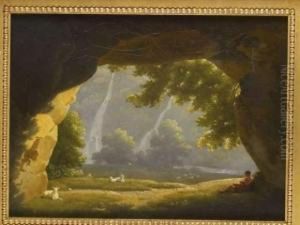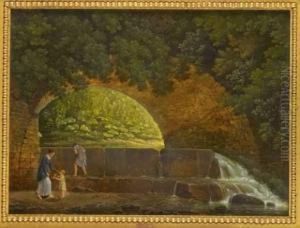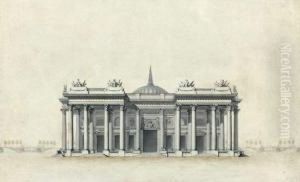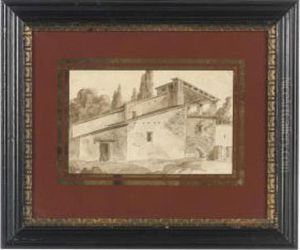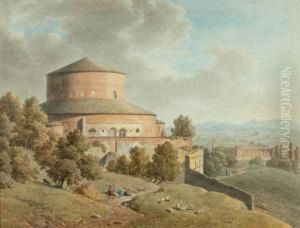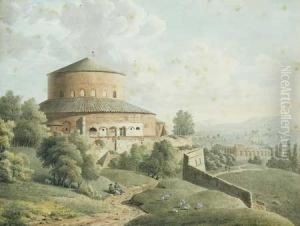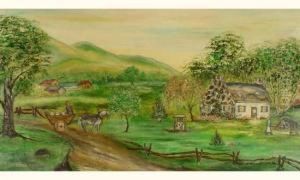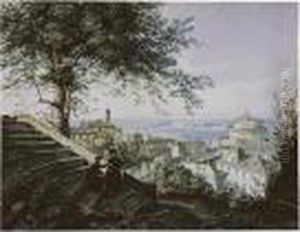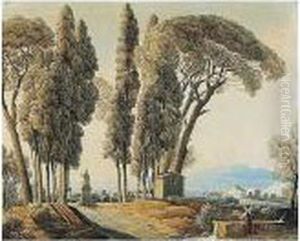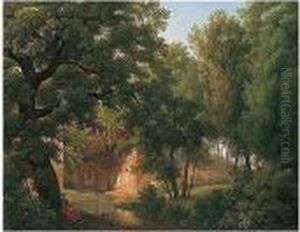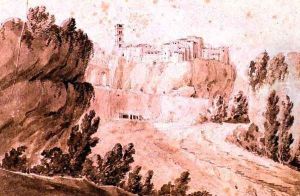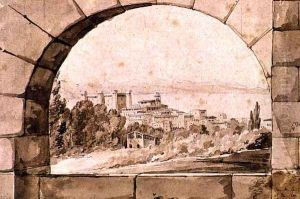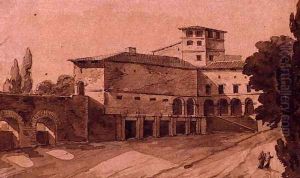Jean Thomas Thibault Paintings
Jean Thomas Thibault was a French painter, architect and educator, born in 1737 in Paris, France. Thibault is best known for his contributions to architectural education and for his work in architectural drawing, rather than for built structures. He was educated at the French Academy in Rome, which was a common practice among French artists and architects of the time, allowing them to study classical art and architecture first-hand.
Thibault's drawing skills were highly regarded, and he played a significant role in the development of the École des Beaux-Arts in Paris, an influential art and architecture school. He worked on the establishment of standards for architectural education, which included a strong emphasis on drawing as a means of understanding and designing buildings. His dedication to education was evident in his involvement with the École, where he became a professor.
Throughout his career, Thibault engaged in various projects, producing a series of illustrations and engravings that depicted architectural designs and historical reconstructions. His works were characterized by precision and clarity, reflecting the neoclassical aesthetic that was prevalent during his time. His illustrations served as educational tools and were widely used to teach principles of architectural design to students.
Jean Thomas Thibault was less known for actual construction projects, but his influence on the architectural field was nonetheless significant through his teachings and illustrations. His legacy is particularly felt in the way architectural education was shaped, with a strong foundation in classical traditions and drawing excellence.
Thibault lived through a tumultuous period in French history, which included the French Revolution and the Napoleonic era. Despite the political upheavals, he continued to focus on his work in art and education. He passed away in 1826, leaving behind a body of work that continued to inspire and inform the field of architecture and design.
